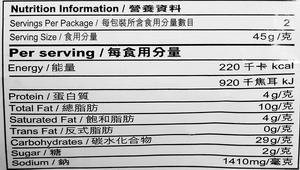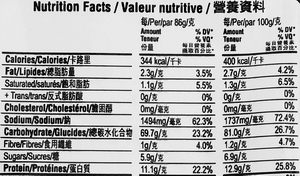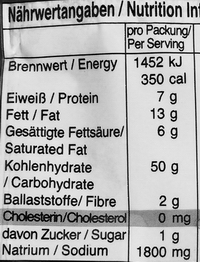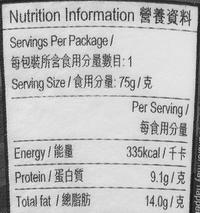Joint Centre for Food Safety (CFS) / Consumer Council (CC) Study
Nutrition Labelling Series Article 3
A Closer Look at "Serving Size" in Nutrition Label
Introduction
1. When reading a nutrition label, apart from taking note of the "1+7" nutritional content, it pays to fully understand the amount of food to which the manufacturer is referring. Nutritional content of a prepackaged food can be based on "per 100 g (or 100 mL)", "per serving" or "per package".
What is serving size?
2. Serving size refers to the amount of food that people customarily consume a particular type of food at each eating occasion. Serving sizes are determined by food manufacturers, there may be variations among different food types as well as different brands. Take instant noodles as an example of illustration. The nutrition label of Noodle A tells that the serving size is 45 g, and there are totally two servings in each package. That means the whole pack of Noodle A, as suggested by the manufacturer, is to be consumed in two separate occasions, and the nutritional intake at each eating occasion will be the same as that shown in the nutrition label, i.e. 220 kcal of energy, 4 g of protein, etc. In case the whole pack of noodles is consumed in one single eating occasion, the amount of energy and nutrient intake will double, i.e. 440 kcal of energy, 8 g of protein, etc.
Products can be compared directly if serving sizes are similar
3. If two noodle products have similar net weights and both are consumed as one single serving, then we can compare their nutritional contents based on "per serving" directly. For Noodle B and Noodle C, consuming the whole pack of noodles will take in similar amounts of energy (344 kcal and 350 kcal respectively), but consuming the latter one will take in more total fat, saturated fat and sodium.
Simple conversion will be needed before making comparison if serving sizes are different
4. Sometimes serving sizes of different products can be rather different. In this case, some simple conversion will be needed to convert their nutritional contents base on the same amount of food before making comparison. For example, serving size of Noodle B is 86 g whereas that of Noodle D is 75 g. The following formula can be used to convert the nutritional content of Noodle D based on a serving of Noodle D to the same weight as a serving of Noodle B:
After conversion, it shows that consuming 86 g of Noodle D will provide 384 kcal (335 kcal ÷ 75 g x 86 g), which is more than that (344 kcal) provided by 86 g of Noodle B.
Three tips on using nutrition labels
- Take note of the serving sizes suggested by manufacturers and the nutritional contents that interest one most.
- For food products with similar nature and serving sizes, their nutritional contents can be compared directly.
- For food products with different serving sizes, the following formula can be used to do some simple conversion before making comparison:
Nutritional content of a serving of Food A ÷ Serving size of Food A x Serving size of Food B

Noodle A: Net weight is 90 g; serving size is 45 g.

Noodle B: Both net weight and serving size are 86 g.

Noodle C: Both net weight and serving size are 85 g.

Noodle D: Both net weight and serving size are 75 g.
More Information
5. The related article is also published in the CHOICE MAGAZINE (Issue 403 released on 14 May) (Chinese only).
Centre for Food Safety
Food and Environmental Hygiene Department
May 2010